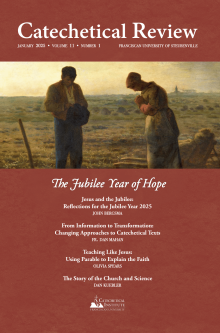 The catechetical aspect of the Order of Christian Initiation of Adults (OCIA) is inseparable from the practical reality it seeks to inform. It is the work of teaching the faith so as to empower people to truly live it in their daily experience.
The catechetical aspect of the Order of Christian Initiation of Adults (OCIA) is inseparable from the practical reality it seeks to inform. It is the work of teaching the faith so as to empower people to truly live it in their daily experience.
The rest of this online article is available for current Guild members.
[1] Congregation for the Clergy, General Directory for Catechesis (United States Conference of Catholic Bishops, 1998), cited as GDC in text.
[2] See Sacred Congregation for the Clergy, General Catechetical Directory (1971), nos. 18, 24.
[3] See The Order of Christian Initiation of Adults (International Commission on English in the Liturgy, 2022), cited as OCIA in text.
[4] See Didache 1:1; CCC 1696; Aidan Kavanagh, The Shape of Baptism: The Rite of Christian Initiation (Liturgical Press, 1978), 36.
[5] See Pope John Paul II, Catechesi Tradendae, no. 28.
[6] OCIA, Appendix III; United States Conference of Catholic Bishops, National Statutes for the Catechumenate, norm 6.
[7] John Paul II, Catechesi Trandendae, 20.
Art Credit: Pexels.com.
This article is from The Catechetical Review (Online Edition ISSN 2379-6324) and may be copied for catechetical purposes only. It may not be reprinted in another published work without the permission of The Catechetical Review by contacting [email protected]


















